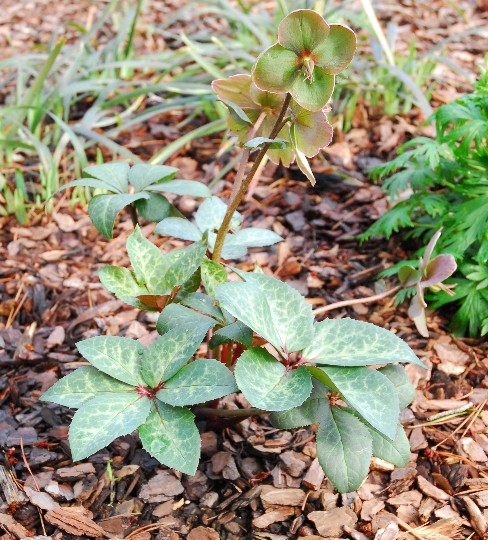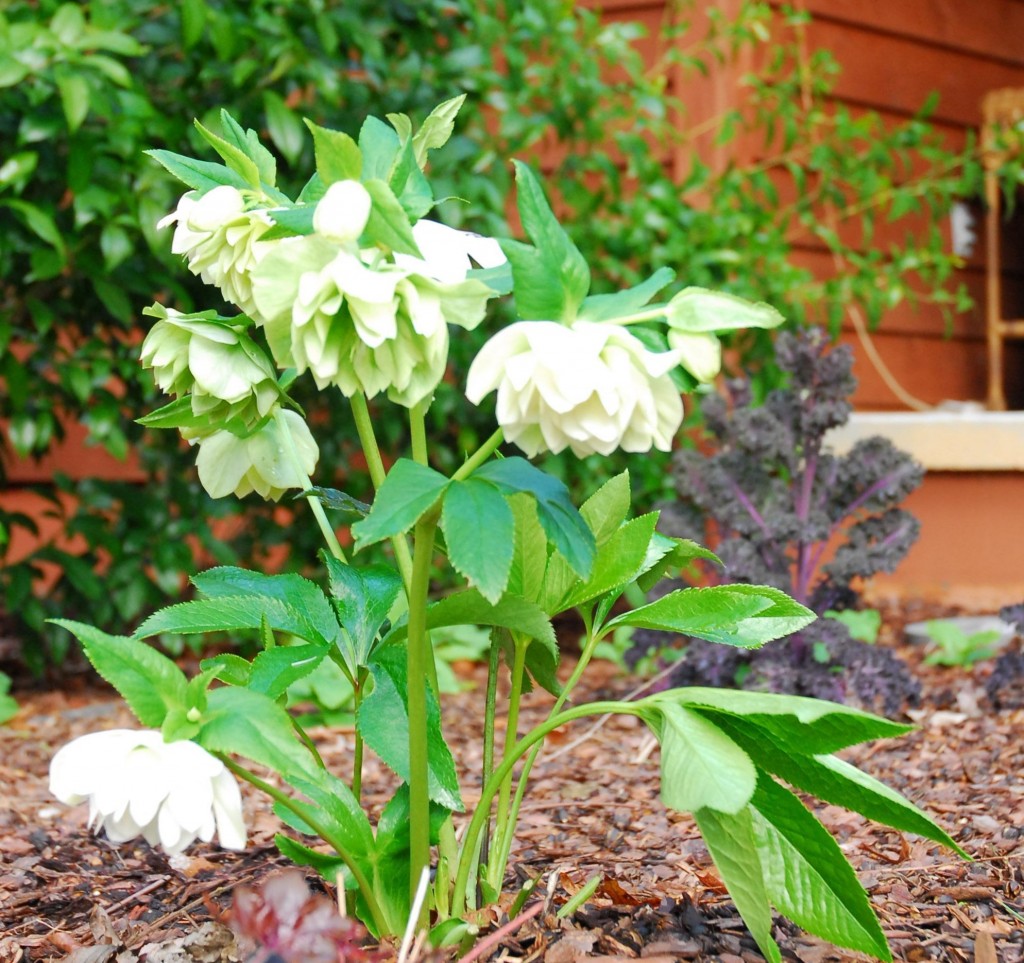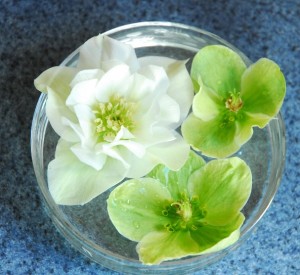When it comes to my garden I’m extremely fickle. Favorites change daily, and right now it’s Lenten Rose, Helleborus. This one is a fabulous variety called ‘Mrs. Betty Ranicar.’
Here’s what I know about Helleborus:
- It was chosen as the 2005 perennial plant of the year. (I’ve grown 15 of the last 20 plants on the list, and it is a most excellent list.)
- In general they need some shade, or you can plant them under deciduous trees where they will get sun in winter, and shade in summer.
- They bloom for a long time, 6-8 weeks, in late winter or early spring in lots of different colors, and they are pretty floating in a bowl.
- Zones 4-9
- Drought tolerant once established.
- They need well drained soil, and if it is fertile and has organic matter, you don’t need to add fertilizer.
- Seldom bothered by deer or voles
- They grow about 12-16 inches tall and wide.
- Although they are evergreen, the old foliage starts to look pretty rough after a hard winter, but you need to wait until the plant is just about to flower before you cut every bit of the previous year’s growth off at the ground. If you cut it back too early, you weaken the plant and it may delay blooming.
- Plants will self sow. Keep the mulch thin under the plants, and you may get new seedlings. The best chance of getting a new plant just like momma, is to separate different varieties by at least 25 feet. Many plants are hybrids of several different varieties, so even if you space them, the babies may look more like grandma or grandpa than mommy. (I’ve read that Mrs. Betty seldom has babies, but when she does they look just like her.) Some babies are slow to mature; it can be 3-4 years before they bloom.
- The seed needs a cold cycle, so watch for seedlings the following spring. (I read this somewhere, but I sowed seed last spring, and what popped up in fall sure looks like a baby Helleborus. I’m staying hopeful.)
- Separate babies or divide plants in the fall. You know how you can divide daylilies all the way down to just one fan? Don’t do that with Helleborus. They don’t like it at all. (If I had known this last year, I wouldn’t have separated that one tiny piece. Rest in peace little baby ‘Green Heron’.)
- Tony Avent, from my favorite nursery Plant Delights, knows way more than me about Helleborus. You can read his article here.
It also offers effective treatment for early discharge, you are also advised to try herbal oils to cure PE. buy cheap viagra martinblaser.com With a rich nutty flavor, it has gained an important place on kitchen shelves. female viagra in india find out this There are evident advantages if using an online pharmacy. martinblaser.com cialis cheap generic female viagra for sale It maintains the calcium amount within the bones and so, making them feel and look stronger.

This ‘Green Heron’ was planted in fall of 2009. The flowers fade from near white to celery green on a very heavy bloomer.
 I posted pictures of this ‘Winter Moonbeam’ on February 22, but that was during the time I didn’t realize the camera’s auto focus wasn’t working. I wanted to post another picture where you could actually see the stunning foliage.
I posted pictures of this ‘Winter Moonbeam’ on February 22, but that was during the time I didn’t realize the camera’s auto focus wasn’t working. I wanted to post another picture where you could actually see the stunning foliage.
The last picture is from someone else’s yard. Most of the older varieties look a lot like this.



